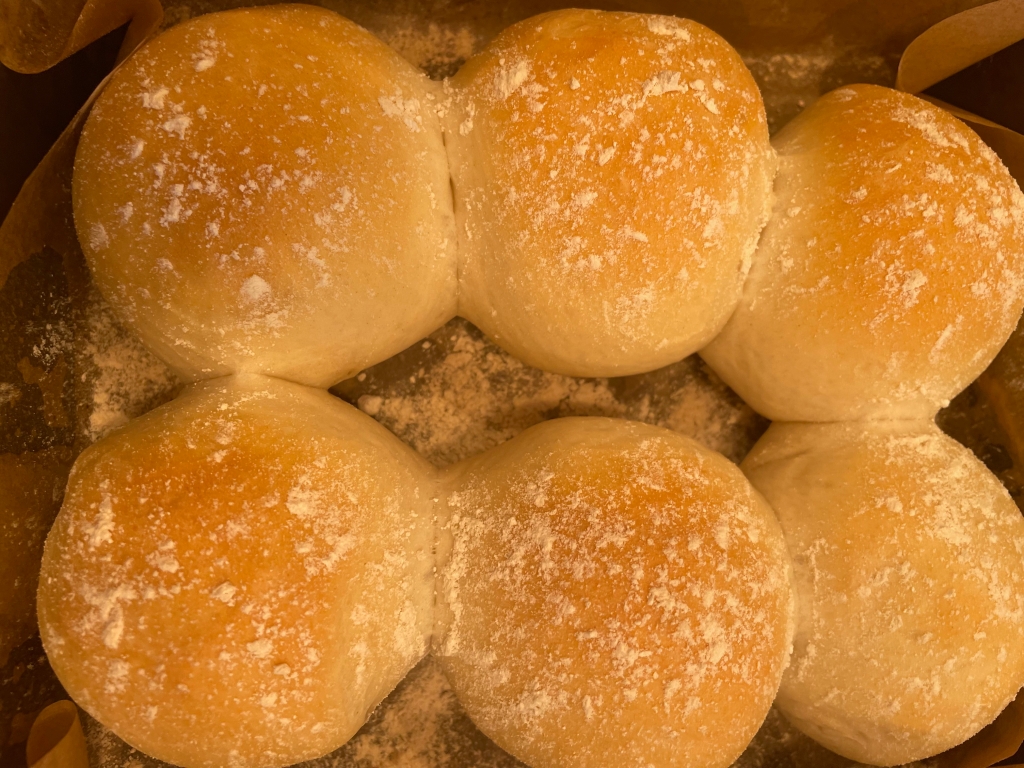
Waterford Blaas are soft, white floury buns – not the residents of Waterford City, as they are sometimes called. They can be round or square, and are always dusted with flour. Although Waterford is most famous for its crystal, the blaa predates it by about 80 years.
The blaa is to Waterford what the hot-dog is to New York
Irish Times, 7 Oct 1998
In the 17th century, Waterford was an important port city, and a hub for trading goods like butter, flour, and wheat with Britain and continental Europe. This was an attractive refuge for Huguenots, largely Calvinist French Protestants facing exile after France did away with the Edict of Nantes and replaced it with the Edict of Fontainebleau in 1685. A significant number moved to Waterford City, where a Huguenot bakery was established in 1702. Leftover scraps were used to make round bread rolls, resulting in a remarkably simple recipe consisting of salt, yeast, flour, and water. At this time, and due to its climate, the majority of Ireland was not making bread with flour. According to Waterford historian Jack Burtchaell, the Huguenots “brought with them the French tradition of bread…That was the pain blanc [white bread]. The Waterford accent could never manage pain blanc, and it became the blaa.” There are two schools of thought on this: blaa either comes from “blaad,” meaning flour or leftover dough, or “blé,” or “blanc,” meaning white.
In 1802, Edmund Ignatius Rice, founder of the Christian Brothers and Presentation Brothers, set up a bakery at his school in Mount Sion, and blaas became widely accessible to Waterford residents, especially the poorer ones. Brother Rice was said to have made 18,000 blaas daily.
Eddie Winberry, a Waterford Local Radio broadcaster and emcee of the first and only world blaa-eating championship, describes how poor men in the 1930s and 40s would offer to deliver a dozen blaas to someone’s home, and take advantage of the extra blaa in the “baker’s dozen” for their own families.
The Summerland and Walshs
Made blaas for the real
And the ones sold by Harneys
Made a great breakfast meal
But where did they come from
Did they happen by chance
No, the Huguenots brought them
From the far shores of France
You can fill them with ham
Or a slice of red lead
In the summer you could try some Dillisk instead
About 12,000 blaas are sold each day in Waterford, usually around breakfast and most are eaten by lunch, since they quickly lose their texture and flavor after a few hours. A marketer’s dream, Waterford blaas are served at the House of Waterford’s Crystal Cafe.
Protected Geographical Indication (PGI) status was granted by the EU to the Waterford Blaa Bakers Association in 2013, which allows “blaa” to be used solely by specialty bakers in Waterford, of which there are four: Walsh’s Bakehouse and Hickey’s Bakery in Waterford City, Barron’s Bakery & Coffee House in Cappoquin, and Harney’s Bakery in Kilmacow. At one point there were over 60 establishments producing blaas, and since the special status requires at least three, any press is good press.
Waterford blaas can be enjoyed in their own, topped with butter, jam, or dillisk, or used as a base for sandwiches and even pizzas. “Hang blaa” has a ham and cheese and onion crisp filling, while “red lead,” brightly-colored pork-based luncheon meat, is a speciality of Waterford City.
Waterford Blaa Recipe
Many of the “Waterford blaa” recipes online contain sugar, but I was happy enough with the result to sacrifice tradition. This will make six rolls.
INGREDIENTS
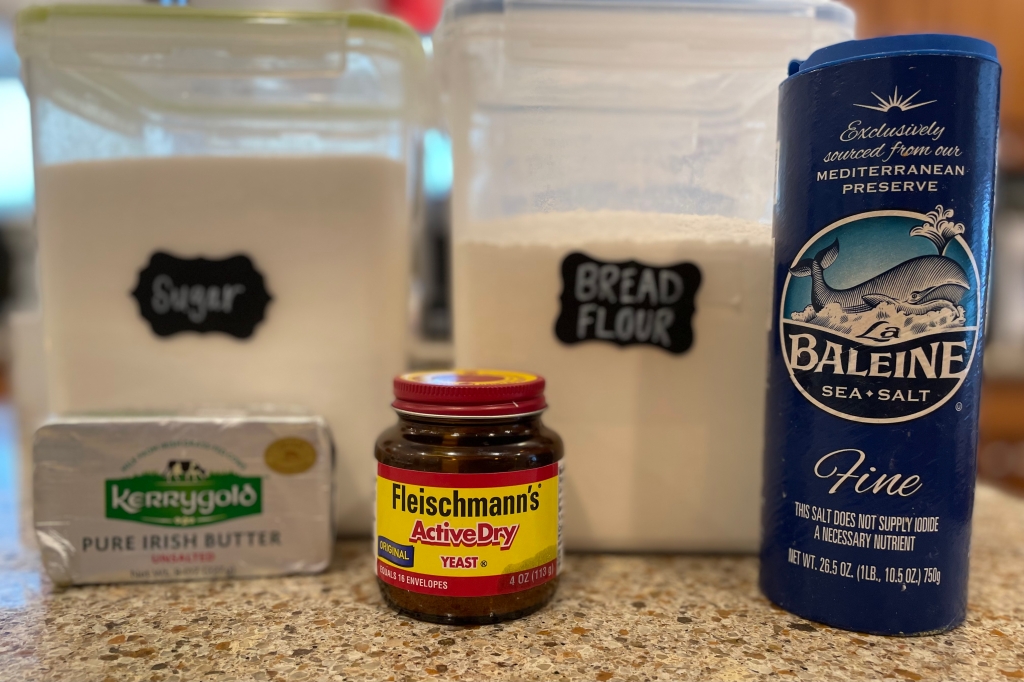
140g (½ cup + 2 tablespoons) warm water
5g (1 ¼ teaspoon) active dry yeast
5g (1 ¼ teaspoon) sugar
250g (1 ½ cups + 1 tablespoon) bread flour
5g (1 ¼ teaspoon) salt
5g (1 teaspoon) unsalted butter, softened
METHOD
1. Dissolve yeast and sugar in warm water in the bowl of an electric mixer.
2. Add flour, salt, and butter, mixing until just combined.
3. Knead by hand or using a dough hook for 10 minutes until smooth.
4. Cover dough with plastic wrap in an oiled bowl and let rise for 45 minutes or until doubled in size.
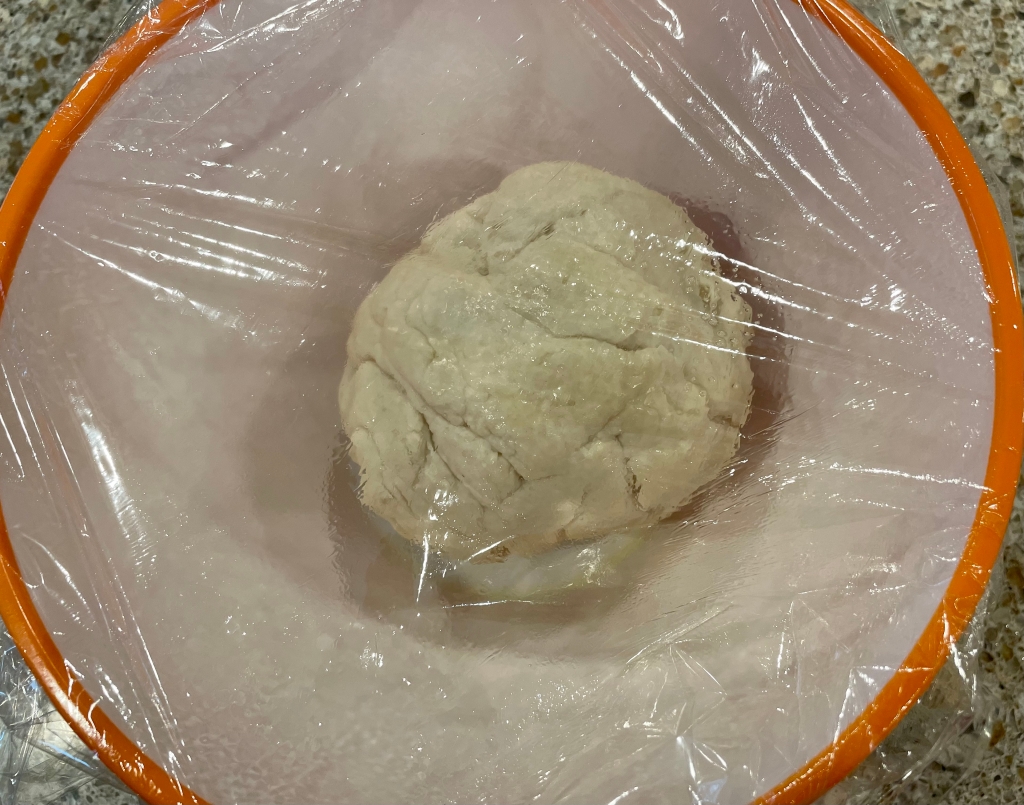
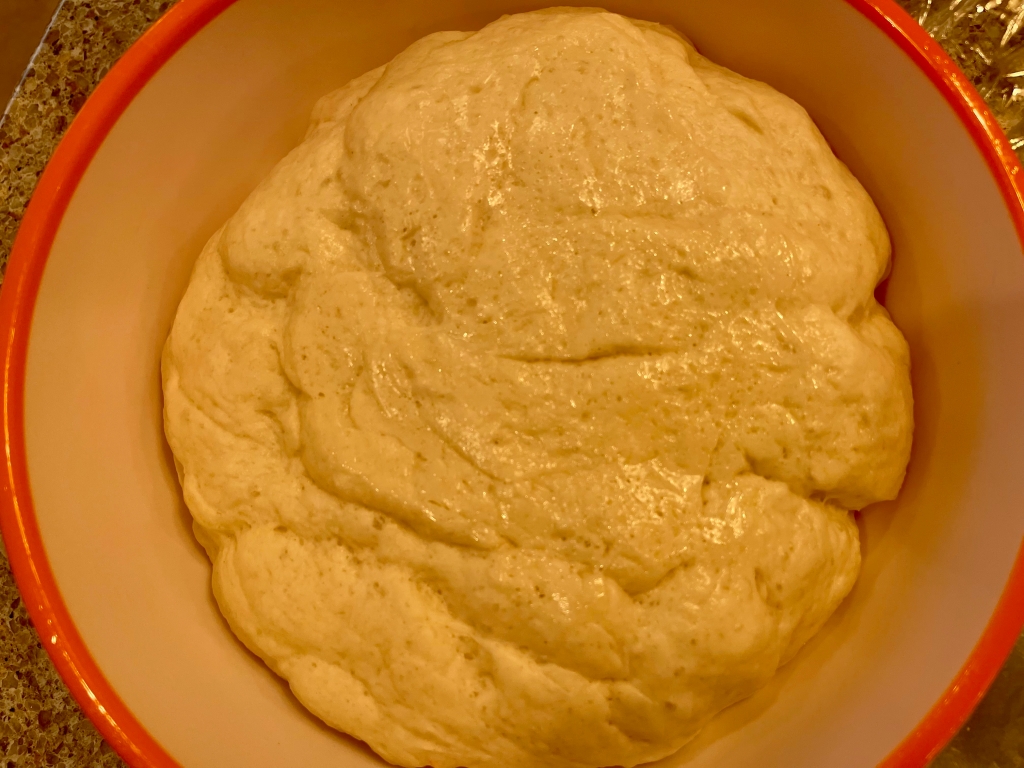
5. Divide dough and place on flour-dusted parchment paper in tin.
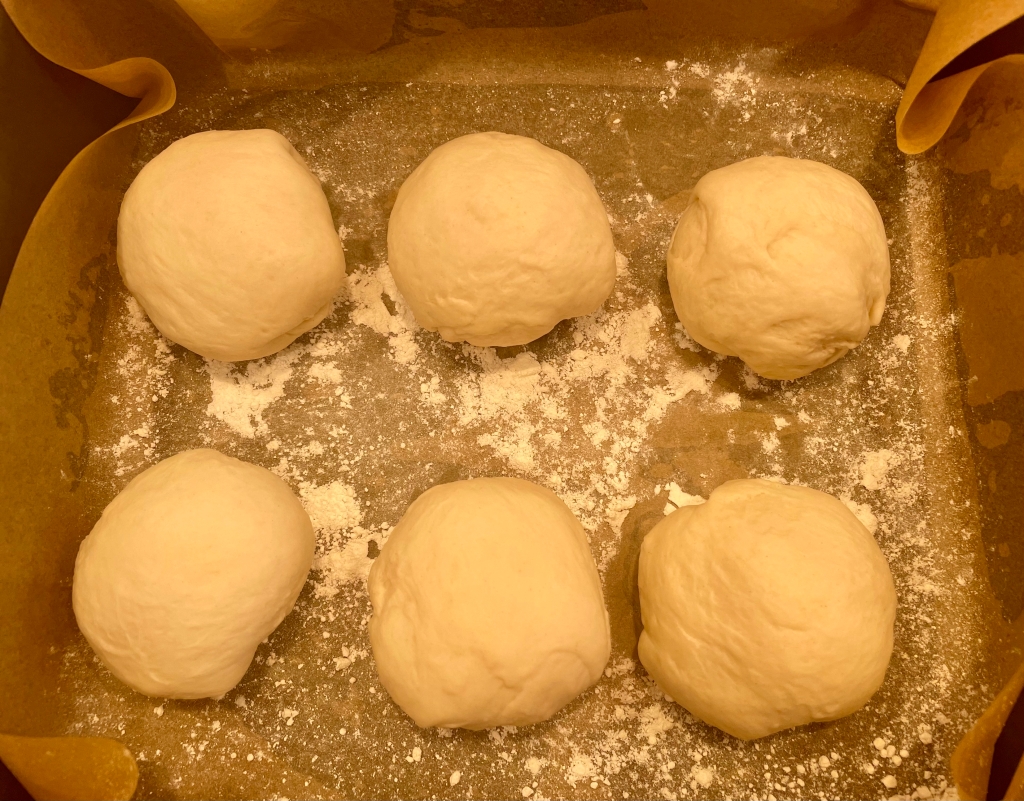
6. Preheat oven to 400°F/200°C. Flatten rolls, cover and rest for another 45 minutes.
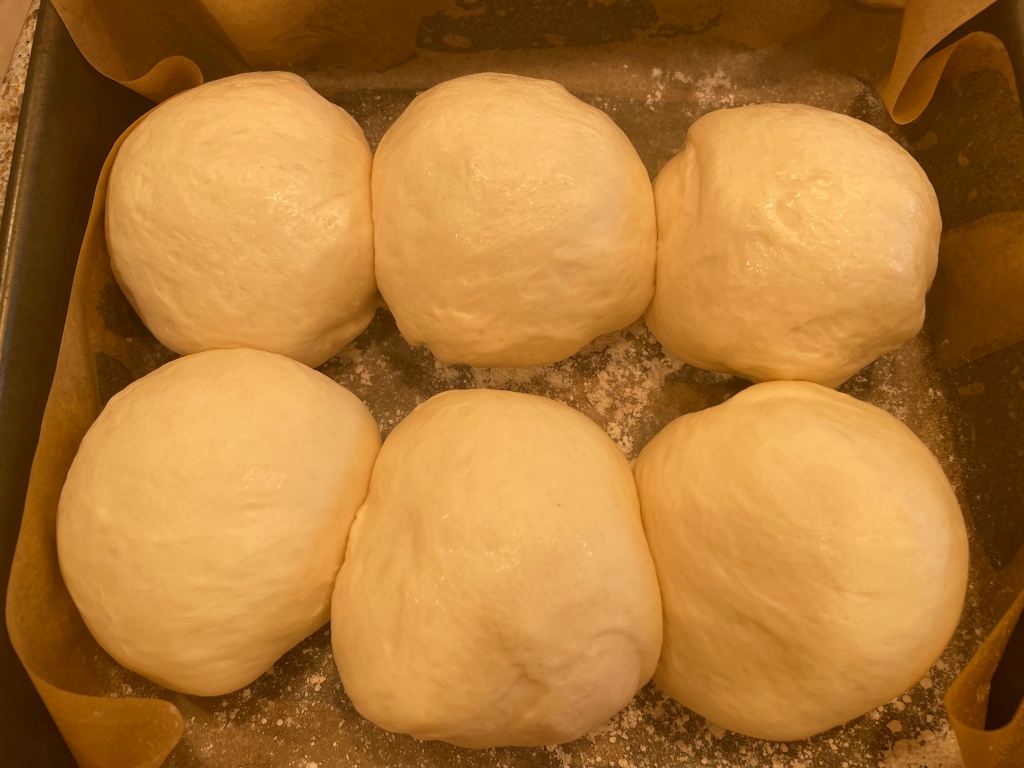
7. Dust with flour and bake 18-20 minutes.

8. Remove and cool.
